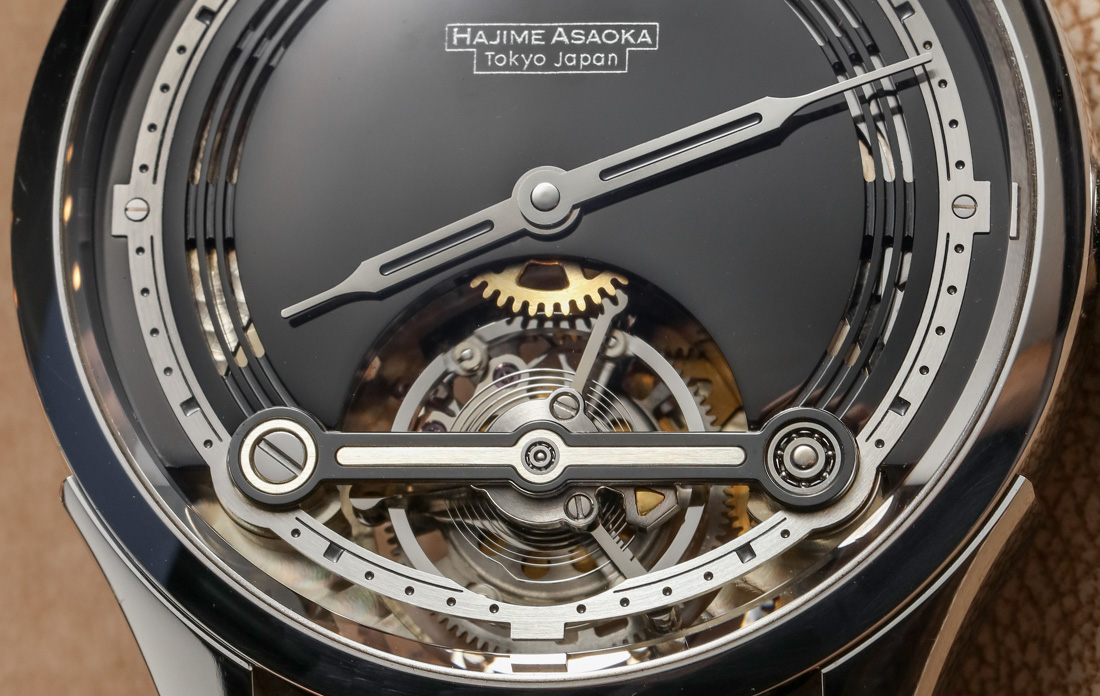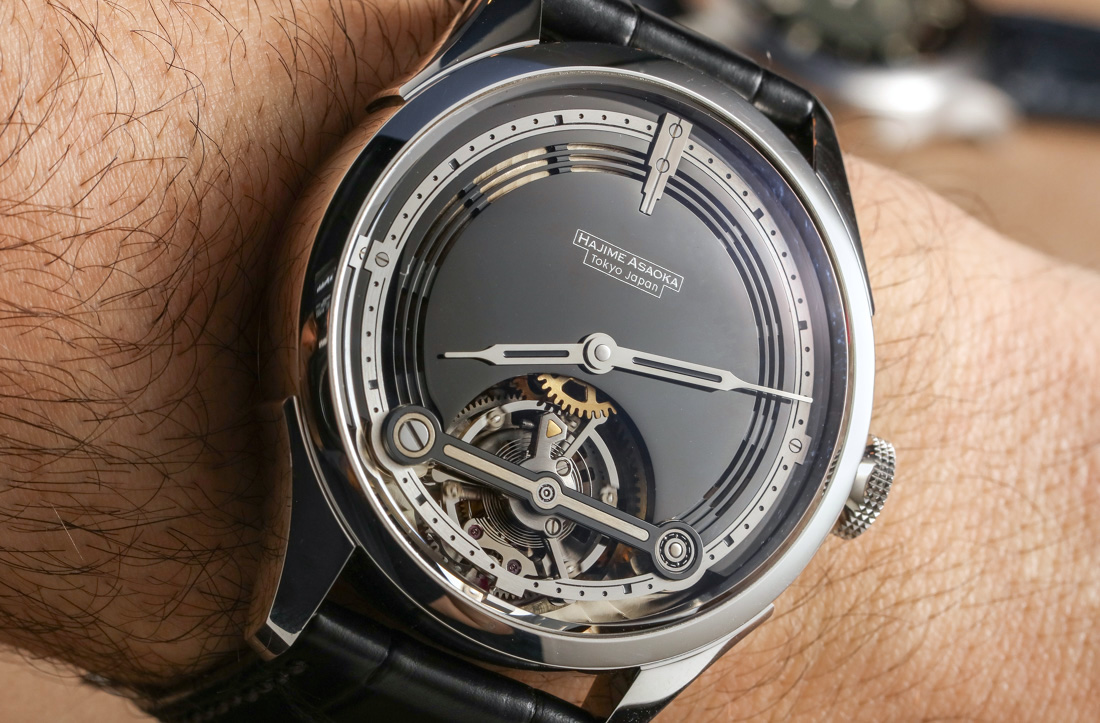
I’ve got to say, I’m writing up this hands-on article about the Hajime Asaoka Project T Tourbillon with Ariel’s images – and that fills me with great frustration and jealousy. You see, Hajime Asaoka is on the very top of my list of independents whose work I want to see hands-on, but I am yet to have the chance to do so. A blend of what I’d call postmodern Japanese design, quirky engineering solutions, and a bold, proudly personalized approach to high-end watch design and horology, Hajime Asaoka’s work is among the most characterful in all of watchmaking today.
Hajime Asaoka graduated from the Department of Design at the Tokyo National University of Fine Arts and has had a career in product design, publication, and advertising before moving into making watches on his own in the late ’00s. An eye for design becomes immediately apparent in his individual pieces as much as from his body of work – something plenty of major brands struggle with even today, as we all know so well. Hajime Asaoka’s first watch was a tourbillon, launched in 2009. This one, the Project T Tourbillon was launched later in 2014, but I think we’ll all agree, it hasn’t aged one bit.
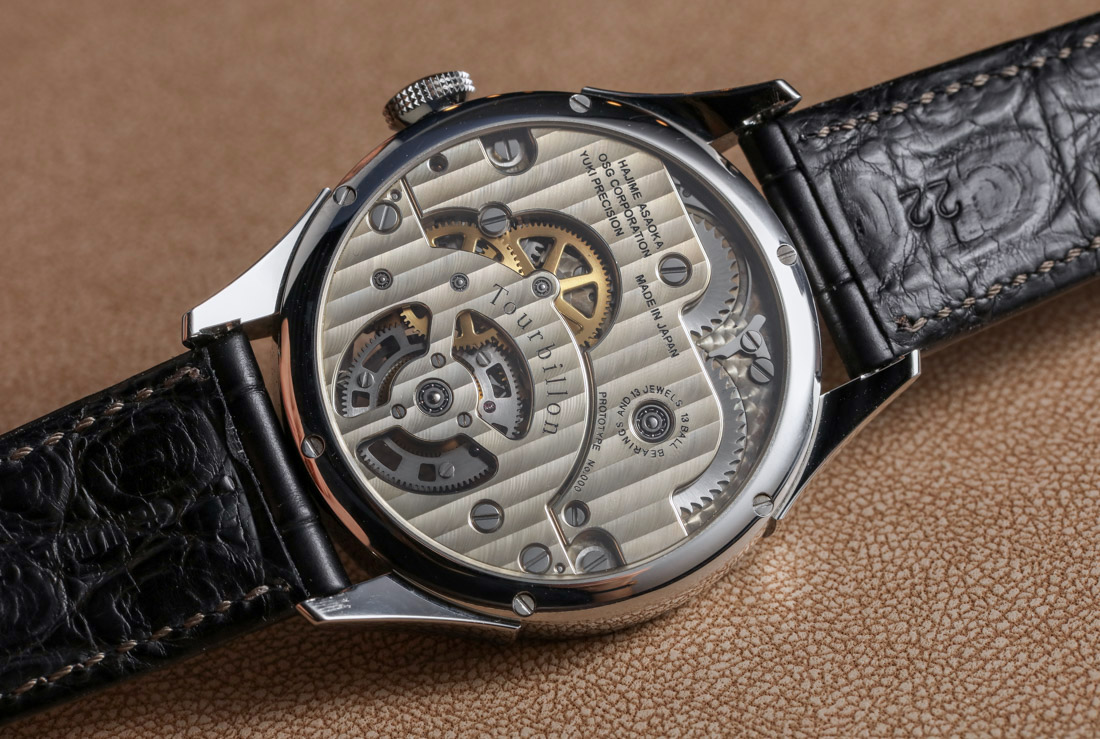
Overall looks and wearability we’ll get to soon, but let’s first look at the more unique engineering solutions inside the Hajime Asaoka Project T Tourbillon. What stood out for me first when looking at the watch was the ball bearing inside the right hand end of the tourbillon’s upper bridge. Clearly, the tourbillon is being driven by the third wheel that has its pinion secured by ball bearings from top and below alike. Operating frequency is a traditional 18,000 bph and power reserve is 40 hours. Asaoka-san has used 13 jewels and 13 ball bearings for the Project T Tourbillon, his reasoning being that ball bearings are more reliable and durable than synthetic ruby jewels.

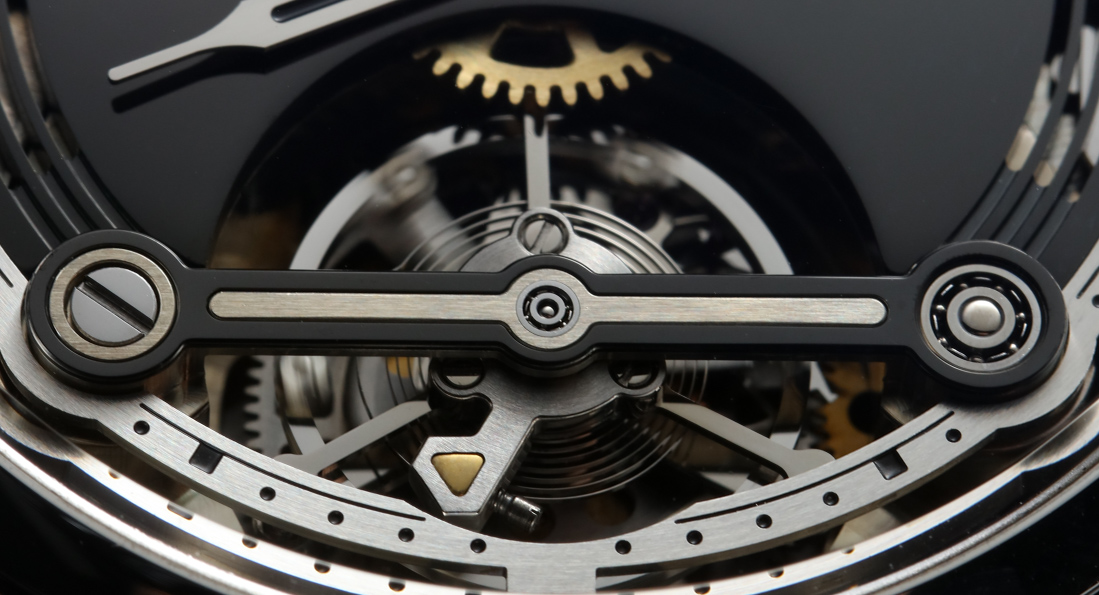
Some would argue that ball bearings have more friction – and I wish I could be an authority on the exact friction values of each solution. Since I am not, I’ll not perpetuate dubious sources on the matter and will just say what the watchmaker said: these are the among the smallest ball bearings in the world and they come from high-end Yuki Precision. Because I’m a total nerd (and because Hajime’s site wasn’t clear if the bearings were from OSG, who they’ve also worked with, or Yuki Precision Co. Ltd.), I Googled around and found that, in 2017, it was Yuki Precision that was awarded the Guinness World Record for a 1.5mm outer diameter ball bearing that they had used for… a fidget spinner. Can this story get any more Japanese? I think not. Whether or not that’s a fraction smaller than the ones in the 2014 Project T Tourbillon, I’m not sure – but these are certainly among the smallest possible ball bearings in the world.
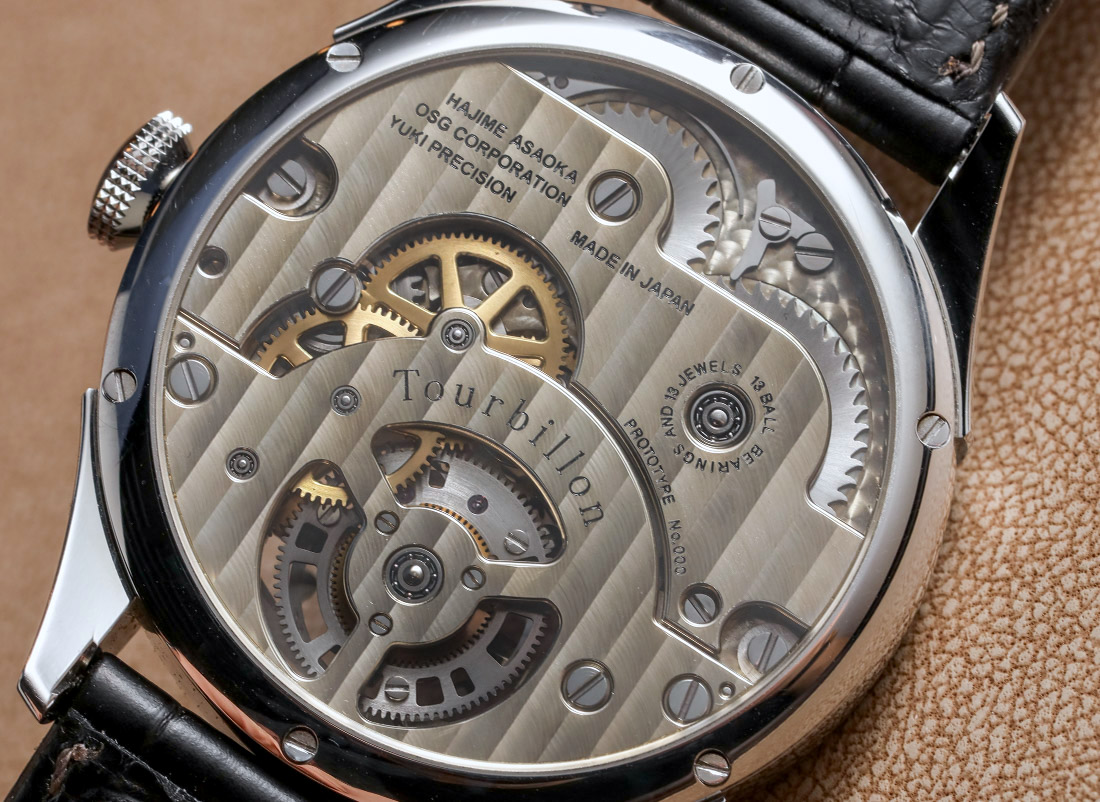
A quirky detail to be seen on the caseback shot above is how the tourbillon assembly is driven by the gold wheel barely visible to the left of the tourbillon, with drive transmitted to the massive, silver-colored (actually titanium) wheel in the center of the cut-outs below the Tourbillon text. Also note how in the closer center, there is a gold-colored wheel that’s barely larger than the center of the plate. Why is this interesting? Well, because it’s pretty much an inverse of what tourbillons normally look like. Normally, the tourbillon’s cage (that we love to see and admire on the dial side) is connected to a pinion (that is a very small wheel connected to an axle), and the fixed fourth wheel is a large wheel that does not move an inch. In the Project T Tourbillon, the pinion is actually a massive wheel (the silver colored one), whereas the fixed wheel is that small, concentric wheel in gold. The fixed wheel is required by the escape wheel’s pinion. If this sounds complicated, imagine what sort of a watchmaker’s mindset it takes to mess around with the general order of things.

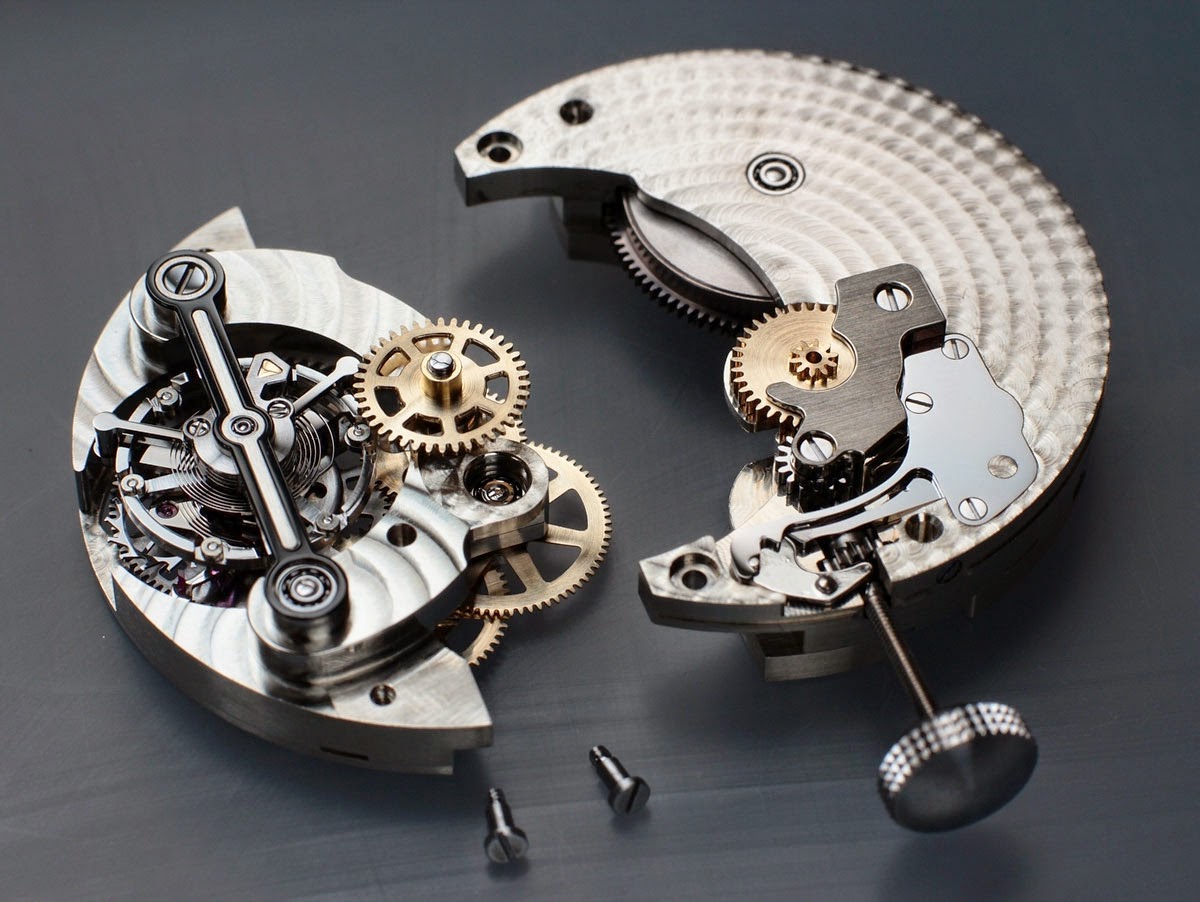
I am also rather fond of the semi-modular design of the movement – the one above is an official shot from Hajime Asaoka of the movement ready to be completely assembled. It reminds me of the Bugatti Chiron, a car whose front and back end are held together only by a dozen – albeit extremely, extremely strong – titanium screws. To give you a more watch-friendly parallel, it also reminded me of the modular escapement system that H. Moser & Cie. uses – that, and the Project T Tourbillon’s solution looks so much more unique and more elegant than the regular “mainplate with things on it” solution that we’ve seen a thousand times. One gets the idea that should the keyless works, the tourbillon, the mainspring or any other part need servicing, they can be disassembled easily – without having the take apart the entire movement, for one half of it can always be set aside and left unmolested after simply removing the two screws that hold the two halves together. Again, such an impressively elegant solution.
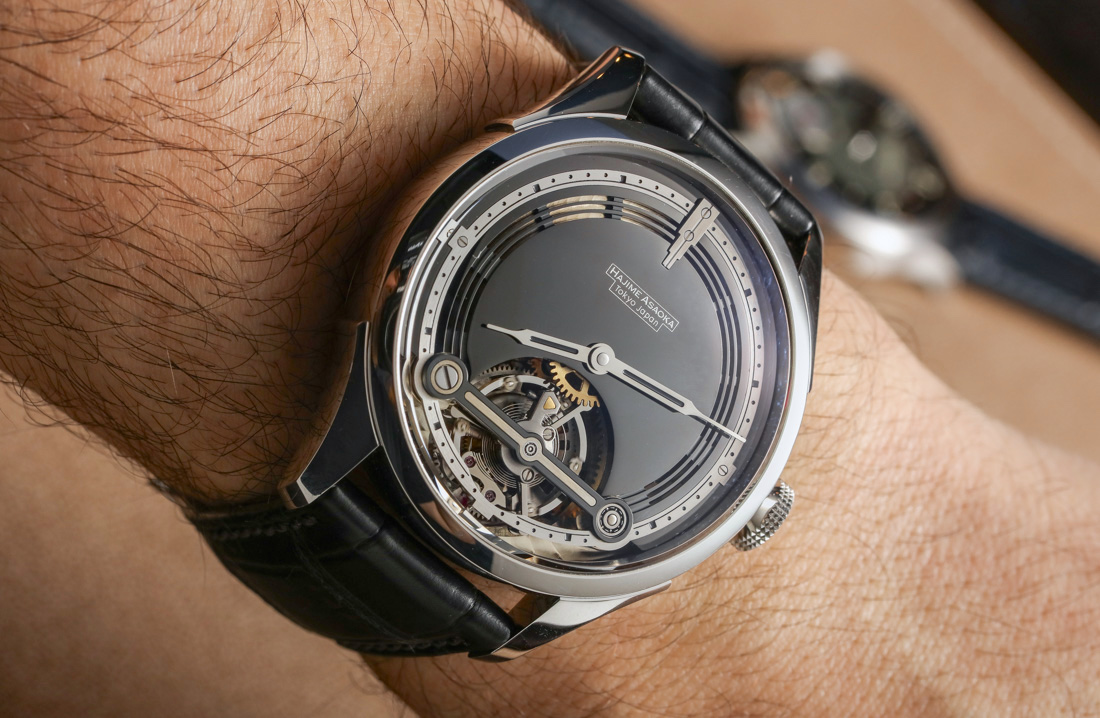
On the wrist, the 43mm stainless steel case wears as any 43mm watch would; rather large, especially with its prominent lugs that are long with wide, polished top surfaces and are set far apart. Still, the overall design manages to come across as light and natural-looking – there’s a lot going on and I imagine the weight is substantial too… But at least it’s entirely lacking the “try-hard” vibe that other large, expensive, shiny metal watches tend to take on. With the skeletonized, airy-looking dial and the long, filigree hands, important elements radiate refinement to offset the chunky case.
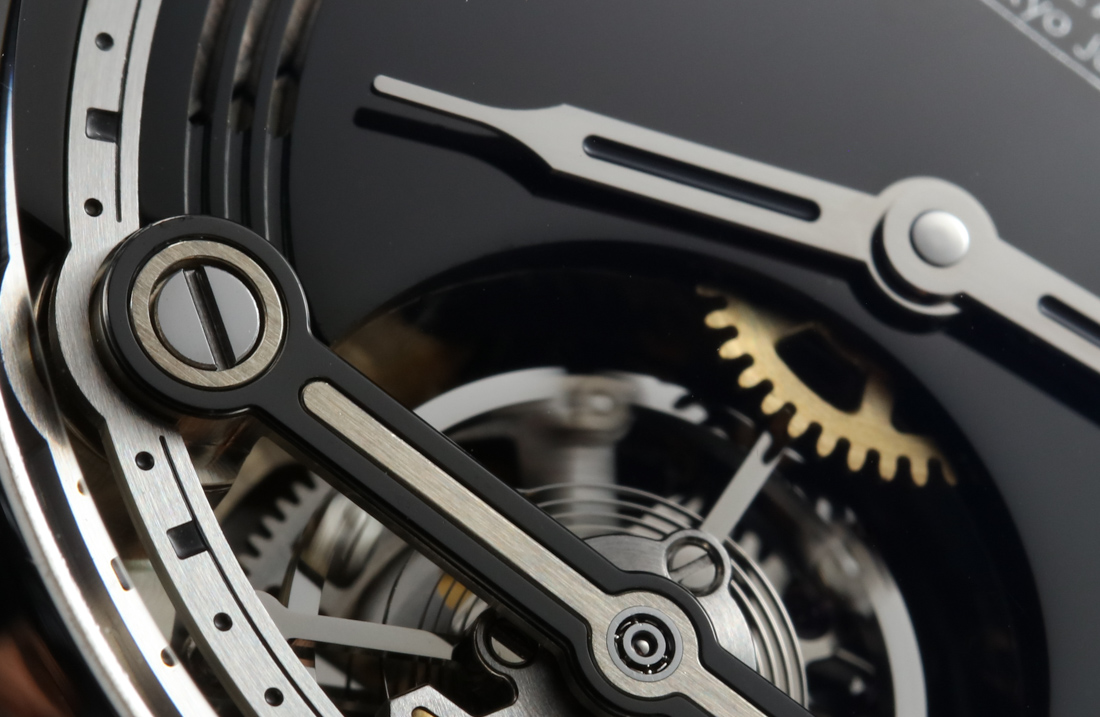
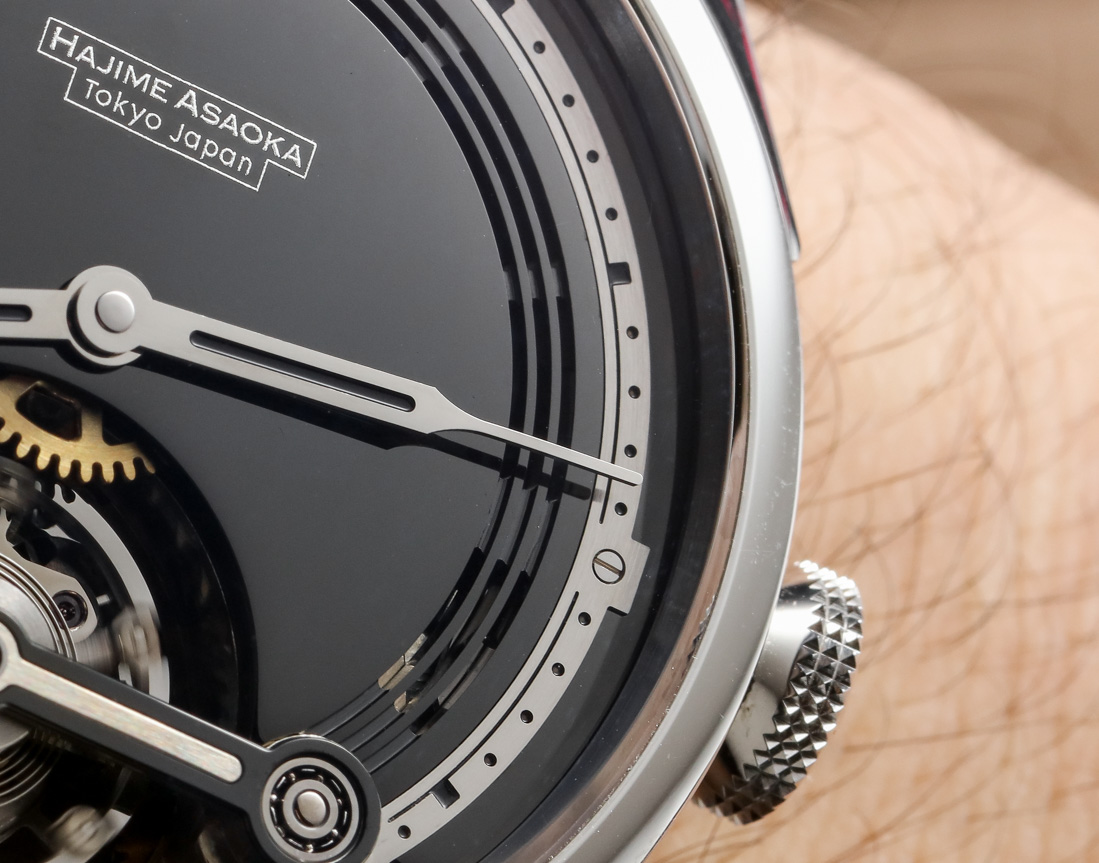
The icing on the cake has got to be that glorious dial that is interestingly, black DLC coated. It has three concentric grooves cut into its periphery, along with a metal minute track with neatly applied and yet more neatly painted small markings – this latter element reminds me of the way George Daniels used to work with metal on dials. A good look at the contrasting design elements is also due if we are to fully appreciate the Hajime Asaoka Project T Tourbillon: black and silver clearly suffice to produce a fascinating look. I especially like the neat metal line set into the top of the tourbillon bridge. It is entirely for design, but looks absolutely fantastic and spices that 6 o’clock region up nicely. This prominent, grey horizontal line also underscores the watch and highlights the tourbillon – again, I can’t find a better way than calling it an elegant touch.
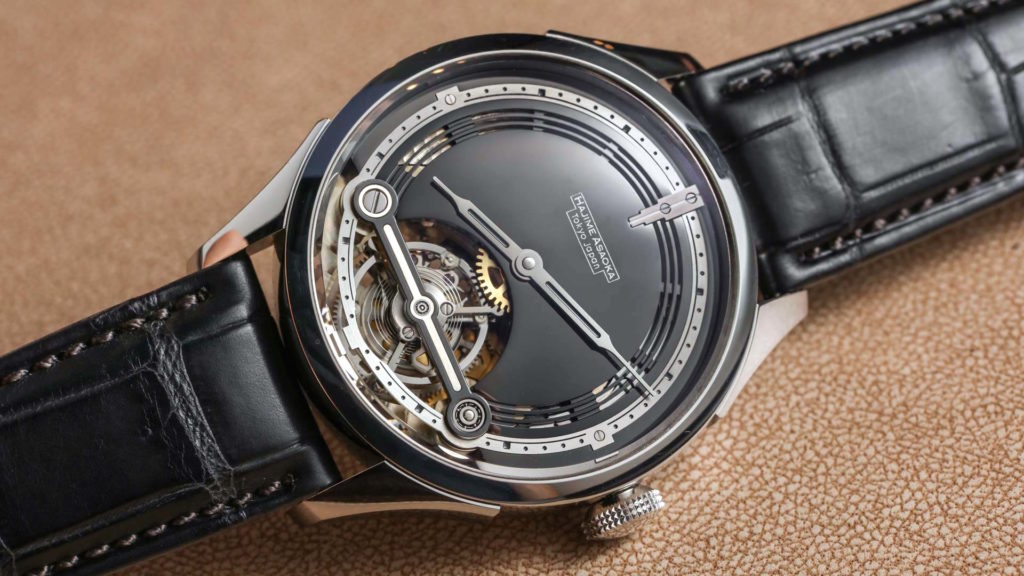
To end on a personal note, I hope to see one or more works of Hajime Asaoka soon, as I’d love to check out and photograph its many stellar details myself. The last price we have for the Hajime Asaoka Project T Tourbillon is about $80,000. Learn more about the watch and watch a video of it on Hajime Asaoka’s site.


